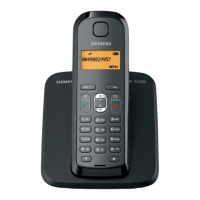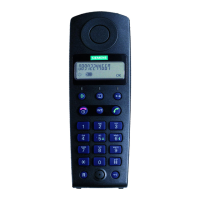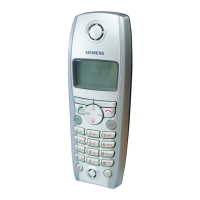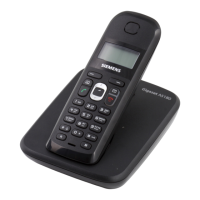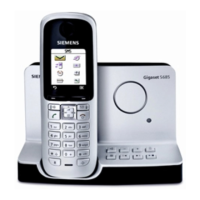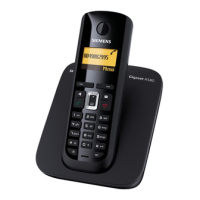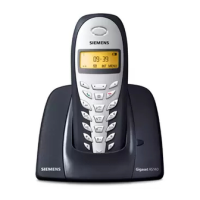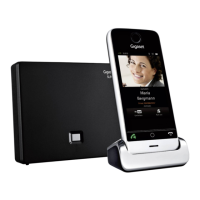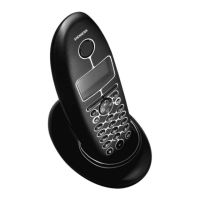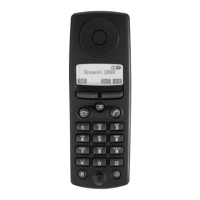
Do you have a question about the Siemens Hicom 300E and is the answer not in the manual?
| Type | Digital |
|---|---|
| Compatibility | Siemens Hicom and HiPath systems |
| Display | LCD |
| Buttons | Programmable function keys |
| Audio | Hands-free talking |
| Features | Call transfer |
Guidelines for safe and correct usage of the mobile unit in various environments.
Instructions for using approved nickel-cadmium batteries and avoiding damage.
Explanation of warning symbols and safety icons related to battery and device usage.
Identification and description of the physical components of the mobile unit.
Details on the mobile unit's display content and the functions of its soft keys.
Overview of the Hicom cordless E DECT telephone system components and architecture.
Highlights the key functionalities and capabilities of the Hicom cordless E 2000C mobile unit.
Recommended operating environments and conditions to prevent damage and ensure performance.
Important operational guidelines, including distinctions between function types and display text handling.
Information on the operational distance of the mobile unit from the base station and factors affecting it.
Procedure for logging off and on when moving outside the base station's radio coverage.
Instructions on how to attach the provided clip to the mobile unit for portability.
Guidelines for cleaning the mobile unit and charging shell using appropriate materials.
Recommendations for lending the unit and proper disposal of batteries and equipment.
How the display system guides users through the telephone system's features.
Step-by-step instructions for opening the battery compartment and inserting batteries correctly.
Procedure for charging the mobile unit batteries and information on charging times and battery life.
Information on registering the mobile unit with the Hicom 300E telephone system.
How to turn the mobile unit on and off using the On/Off key.
Instructions to prevent accidental key presses by locking and unlocking the keypad.
Steps for dialling internal numbers and conducting calls within the system.
Procedure for dialling the main switchboard using its access code.
Instructions on how to make external calls using the designated external code.
How to answer incoming calls, whether the unit is in or out of the charging shell.
Feature allowing users to answer calls ringing on another extension within their pickup group.
Enables receiving a second call while already on a call, with the caller receiving ringing tone.
How to set, display, and cancel timed reminders or alarms for appointments.
Functionality for redialing recently dialled numbers automatically stored by the unit.
Using pre-stored codes for dialing frequently used numbers, including those outside normal barring limits.
Procedure for activating the night service feature by dialling a specific code.
Programming a callback request when an internal user is busy or doesn't answer.
Instructions on how to transfer an external call to another user after consultation.
Performing a consultation call with another user while on an existing call.
Switching between two parties during a consultation call.
Setting up and expanding conference calls with multiple users.
Consulting with another party while already in a conference call.
Disconnecting individual participants from a conference call.
Transferring an established conference to another user.
Setting up fixed call forwarding to a permanent destination like a mailbox.
Configuring call forwarding to a temporary or variable destination number.
Steps to cancel or disable variable call forwarding.
Navigating the Hicom service menu to access various system functions.
Instructions for adding new contacts to the mobile unit's telephone book.
Guide to inputting names using alphanumeric keypad and entering digits for contact entries.
Steps to select and dial numbers directly from the stored telephone book entries.
Procedure for saving numbers from the redial list into the telephone book.
How to remove or modify existing entries in the telephone book.
Process for clearing all entries from the telephone book, protected by PIN.
How to lock the extension using a PIN to prevent unauthorized use.
Activating personal Class of Service (barring level) on an extension.
Instructions for changing or setting the personal PIN for the mobile unit's security.
Table summarizing available settings, their explanations, levels, and default values.
Guide to changing the display language of the mobile unit.
Accessing settings for handset volume and various tone ring options.
Configuring the mobile unit to connect to a specific base station or the best available.
Enabling or disabling automatic searching for the default or other stations.
Managing various audible tones like key clicks, battery warnings, and range alerts.
Detailed explanation of each tone type, its purpose, and default setting.
Troubleshooting guide for common faults with possible causes and solutions.
Information on optional accessories like headsets and charging shells for the mobile unit.

